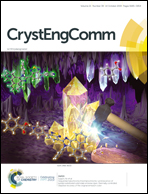Semicoherent growth of single-crystal β-In2S3 layers on InP(111) and InAs(111)
Abstract
Single-crystal layer growth is essential for heterostructure electronic devices. Material combinations that realize novel functionalities within the constraint of the growth are therefore permanently being searched for. We show that two material systems that are important in photovoltaics and optoelectronics can be unified as a single-crystal heterostructure by a purely accidental matching of the lattices. We demonstrate heteroepitaxy of β-In2S3 layers with rigorous lattice alignments on InP and InAs. The single-crystal layers that are achieved when the substrate orientation is (111) are (103)-oriented. The β-In2S3(103) plane is shown to consist of incidental hexagon-shaped units. The (103) plane thus fits the (111) planes of InP and InAs with a mismatch of 6 and 3%, respectively. The alignment is robust, and so the overlayer exhibits corrugations when the substrate orientation is inclined from (111) as the β-In2S3(103) plane is correspondingly tilted. Fourfold symmetric quasi-regular nanostructures are eventually generated on the (001) substrate due to the alignment in the four equivalent 〈111〉 directions. We furthermore examine the optical properties of the β-In2S3(103) layers. The discovery of the semicoherent growth may open up a way to integrate In2S3 layers into the optoelectronic devices produced using (In,Ga)As–InP heterostructures.



 Please wait while we load your content...
Please wait while we load your content...